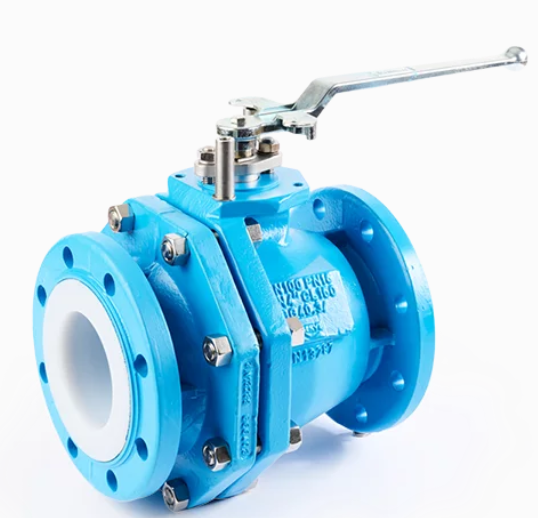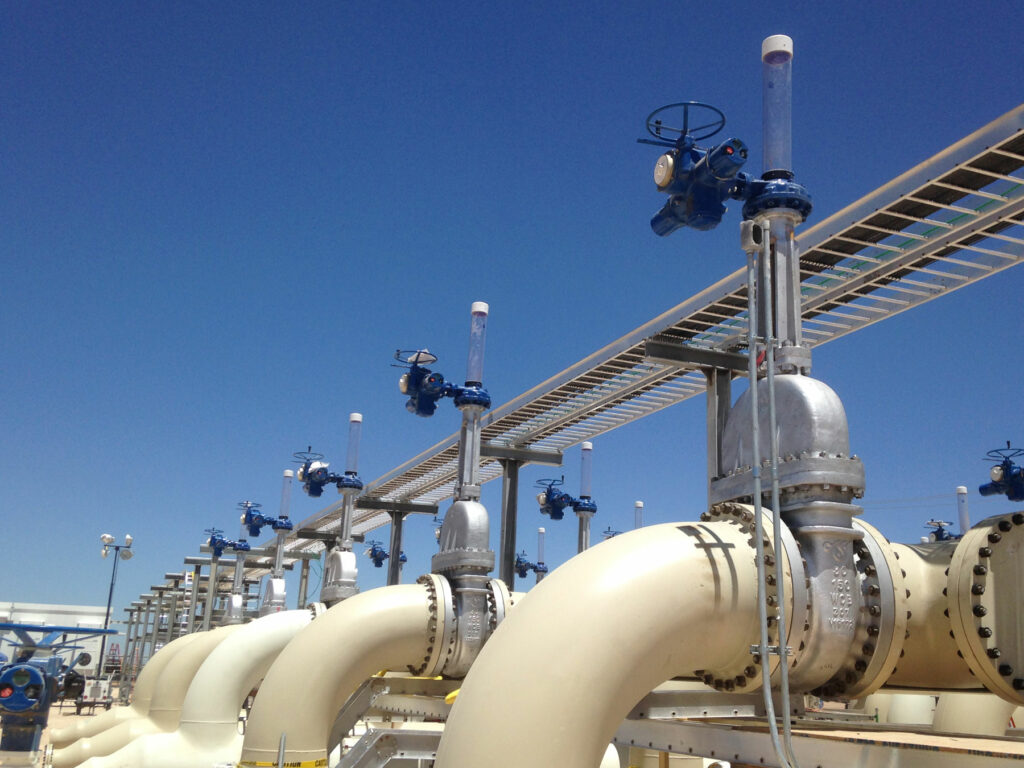Gate valves and ball valves are two common types of valves used in various industrial applications. Each offers unique benefits and limitations. In this article, we compare gate valves and ball valves, discussing their design, functionality, advantages, disadvantages, and suitable applications. Understanding the differences between these valves can help select the right one for specific operational needs.
What are Gate Valves?
Gate valves feature a flat or wedge-shaped disc that moves perpendicularly to the pipe to start or stop the flow. The gate is lifted completely from the fluid path when the valve is fully open, resulting in minimal pressure drop. Closing the valve entails lowering the gate/disc to seal against the valve seat, stopping the flow entirely.
What are Ball Valves?
Ball valves utilize a spherical ball with a hole (bore) through its center as their valve disc. When in the open position, the ball rotates within the valve body to align the bore with the flow path. However, to shut off the flow, the ball rotates to make its bore perpendicular to the flow path. As a result, ball valves provide a quicker and easier shut-off mechanism compared to gate valves.
Differences Between Gate Valves and Ball Valves
Although gate valves and ball valves have similar applications, there are several differences between them, which the following sections highlight.
Functionality of Gate Valves vs Ball Valves
The design of gate valves allows it to function primarily for on/off service. They are not ideal for throttling because partial opening can cause vibration and damage to the gate and seats. This is due to the high fluid velocity associated with partial opening of gate valves. In addition, it is difficult to establish a linear relationship between the valve gate position and flow rate. Thus, it is currently impossible to provide predictable metering using gate valves. However, they provide a tight seal when completely shut, making them suitable for isolation applications.

Although ball valves are primarily for on/off service, they are a more versatile option as they can serve in moderate throttling applications. This is because the valve position and flow rate relationship is more predictable in ball valves vs gate valves. Ball valves also offer excellent sealing capabilities and are easy to operate, requiring only a 90-degree turn to open or close.
Advantages and Disadvantages
There are several advantages that gate valves bring when serving in an application, and some include:
- Low Pressure Drop: When fully open, gate valves offer less resistance to flow vs other valve types, including ball valves.
- Good Sealing Capability: Provides a tight seal when fully closed, suitable for isolation.
- Wide Range of Sizes: Available in large sizes, thus can serve in applications requiring high flow rates.
The downsides of using gate valves include:
- Slow Operation: Requires multiple turns to open fully or close, which is not ideal during emergencies.
- Not Suitable for Throttling: Partial opening leads to unsteady conditions with adverse effects on valve components.
- Large Installation Space: Significant space is required for installation due to the stem travel in rising stem gate valves.
Ball valves also have unique benefits when used in an application. Some of them are:
- Quick Operation: Requires only a 90-degree turn to fully open or close, enabling rapid response.
- Versatile Applications: Suitable for on/off and moderate throttling applications.
- Compact Design: Requires less installation space in comparison to gate valves.

The challenges associated with ball valves are:
- Higher Pressure Drop: Can cause a higher pressure drop vs gate valves, especially in partially open positions.
- Not Ideal for High Temperatures: The sealing materials can degrade at very high temperatures, limiting their use in such environments.
- Potential for Wear: Continuous operation in throttling applications can cause seat and ball wear.
Suitable Applications
Gate valves are ideal for applications requiring a straight-line flow of fluid and minimal restriction when the valve is fully open. Common applications include:
- Water Supply Systems: Ideal for isolating flow in water distribution networks.
- Oil and Gas Industry: Suitable for pipeline isolation and high-pressure applications.
- Power Plants: Common in steam and condensate systems for isolation purposes.
- Chemical Processing: Employed in systems where a tight shut-off is required to prevent leaks.
Ball valves are suitable for applications requiring quick shut-off, easy operation, and reliability. Common applications include:
- HVAC Systems: Used in heating and cooling systems for on/off control of water and other fluids.
- Chemical Processing: Ideal for handling aggressive chemicals due to their excellent sealing capabilities.
- Food and beverage industry: Used in sanitary applications to control the flow of liquids.
- Pharmaceuticals: Suitable for applications requiring a high degree of cleanliness and quick shut-off.
Choosing the Right Option Between Gate vs Ball Valves
Selecting between gate valves and ball valves depends on the specific requirements of your application. There are several factors to consider as the following table highlights.
| Factors | Gate Valves | Ball Valves |
| Flow Control Needs | Use in applications where tight shut-off and minimal pressure drop are a priority. | Whereas ball valves are the go-to option when prioritizing quick operation and ability to offer moderate throttling. |
| Water Hammer | Slow opening and closing reduces the risk of water hammer. | Ability to close rapidly puts the system at risk of water hammer. |
| Size | Ideal for bore sizes over 2 inches. | More suitable when bore size is are 2 inches or below. |
| Space Constraints | Gate valves, especially the rising stem type, require significantly more space due to their design. | As a quarter-turn valve, it can easily fit in applications where there are space constraints. |
| Operating Environment | Suitable for high-temperature and high-pressure applications. | Excels at providing a tight seal for gas on a long-term basis. |
| Maintenance | May require more maintenance because they have more potential for wear and tear on the gate and seats. | Generally require less maintenance. However, could wear at a faster rate in throttling applications. |


Recent Comments